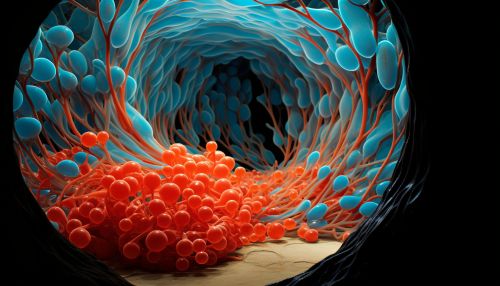MAPK/ERK pathway
Introduction
The Mitogen-Activated Protein Kinase/Extracellular Signal-Regulated Kinase (MAPK/ERK) pathway is a chain of proteins in the cell that communicates a signal from a receptor on the surface of the cell to the DNA in the nucleus of the cell. The signal on the surface of the cell is typically a chemical signal, such as a hormone or a growth factor, which signals the cell to grow or to divide. The MAPK/ERK pathway is integral to the regulation of normal cell processes such as growth, proliferation, differentiation, migration and apoptosis. It is also involved in pathological processes such as cancer and inflammation.


Function
The MAPK/ERK pathway is activated by various extracellular signals including growth factors, cytokines, virus infection, ligands for heterotrimeric G protein-coupled receptors, transforming agents, and carcinogens. It then regulates various cellular activities such as gene expression, mitosis, differentiation, proliferation, cell survival, and apoptosis.
Activation
The MAPK/ERK pathway is activated by the binding of a growth factor to the receptor tyrosine kinase (RTK). This binding causes the RTK to activate the small G-protein Ras. Ras then activates the protein kinase Raf, which activates the protein kinase MEK. Finally, MEK activates the last protein in the pathway, ERK, which can then go on to activate various proteins in the cell, including transcription factors in the nucleus.
Role in Cancer
Abnormal activation of the MAPK/ERK pathway leads to increased cellular proliferation and reduced apoptosis, which can result in cancer. Mutations in the genes encoding the proteins of this pathway, such as the genes for Ras and Raf, are found in many types of cancer. Inhibitors of the MAPK/ERK pathway are being investigated as potential cancer treatments.
Role in Neurological Disorders
The MAPK/ERK pathway also plays a role in the nervous system. It is involved in neuronal survival, synaptic plasticity, and long-term memory. Abnormalities in this pathway have been linked to several neurological disorders, including Alzheimer's disease and Parkinson's disease.
See Also
- The Ras protein family
- Receptor Tyrosine Kinases
- Cancer and its molecular basis
- Neurological Disorders and their molecular basis
